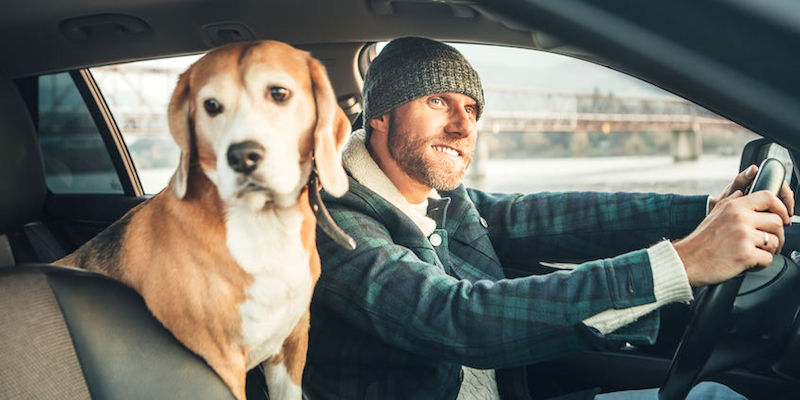Though Colorado ranks among the top 10 states as being one of the most pet-friendly, there are currently no laws against a driver holding a pet while driving or having a pet unrestrained in a moving vehicle.
Here’s why Colorado pet owners should restrain their pets in a moving vehicle.
According to the most recent survey, 68 percent of all households in the United States include pets as well as people. For a lot of these animals, especially dogs, romping around the house is just part of their day; running errands with their owners, going to the vet or daycare is also part of their routine. That means a lot of dogs spend a fair amount of time in the car.
The question is, how many pet owners take precautions to keep their beloved pet safe in the car? Not many, researchers say, and that is why some states are cracking down on drivers who don’t restrain their animal in a moving vehicle.
Provisions of State Laws Vary
Over and over again, you’ve heard about the perils of distracted driving, which the National Highway Traffic Safety Administration (NHTSA) defines as any activity that diverts a driver’s attention from what he or she should be doing, which is driving.
We normally associated distracted driving with tasks such as using a cell phone, eating, or fiddling with the radio. The consequences of distracted driving are deadly as noted by federal health officials. Every day in the United States, nine people are killed and more than 1,000 people are injured due to distracted driving, according to the Centers for Disease Control (CDC).
Starting this month, one town in Ohio is adding to its list another situation that can now be considered a distraction. Police in Mantua can now ticket a driver if they see a pet sitting in a driver’s lap or if the driver is spotted distracted by an animal in the car.
Connecticut, Main, and Minnesota are among the states with laws concerning pets in vehicles, but few other states are joining them on this path; most states have no such laws. Though Colorado ranks among the top 10 states as being one of the most pet-friendly, the state currently has no laws against a driver holding a pet while driving or having a pet unrestrained in a moving vehicle. Those states that have passed such a law note that it’s all due to safety, not just for the animal, but the passengers in the car as well.
Unrestrained Pets Can Create Havoc in the Car
A study by a pet-product merchant shows that nearly 60 percent of drivers questioned say they travel with a dog in their car at least once a month, but of course, we all know of owners who travel with their pet more often than that. Even though pet owners spend billions of dollars every year on pet-related goods and services, only 16 percent of owners spend money on some form of vehicle restraining device for their pets.
Even the most well-behaved dog can be a distraction, and according to research, more than 80 percent of drivers agree that an animal can disrupt driving. Despite that number, most of them don’t secure their pet when in the car, and that can create a serious situation especially if the vehicle is involved in a car accident.
Even a small dog can cause harm to itself as well as others in a moving vehicle if that vehicle is involved in an accident. Consider:
- An unrestrained 10-pound dog in a vehicle that crashes going 50 mph can create about 500 pounds of force within the vehicle.
- An 80-pound dog in a car that crashes at just 30 mph can create up to 2,400 pounds of force.
If an animal gets tossed around during an auto accident, you can imagine the damage that would happen to that animal and any passengers in the car. That much blunt force can cause serious harm, so that’s why it’s vital that animals are restrained, even when making a short trip.
There are many products on the market to keep your pet secure while in the car — everything from an adjustable seatbelt and harnesses to various types of crates or barriers that will stop an animal from flying about the car if there is a crash.
So, if you are among those that enjoy riding with your pet, and you aren’t among those who use some form of restraint, please consider changing your ways. You will help keep yourself and your pet safer if you should be involved in an accident.

